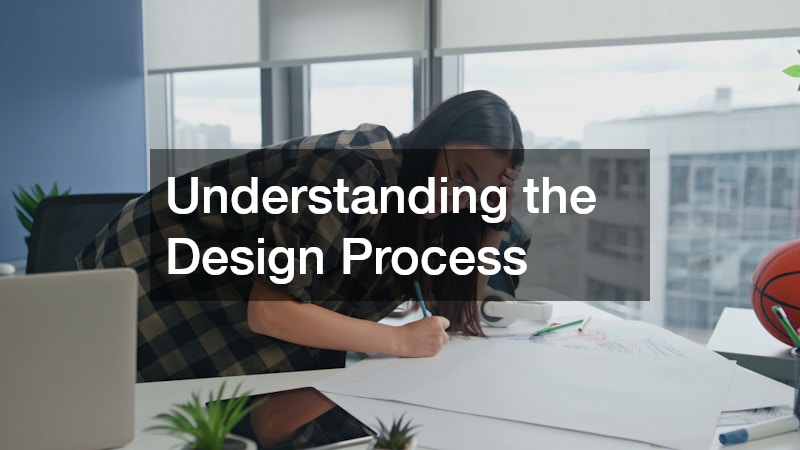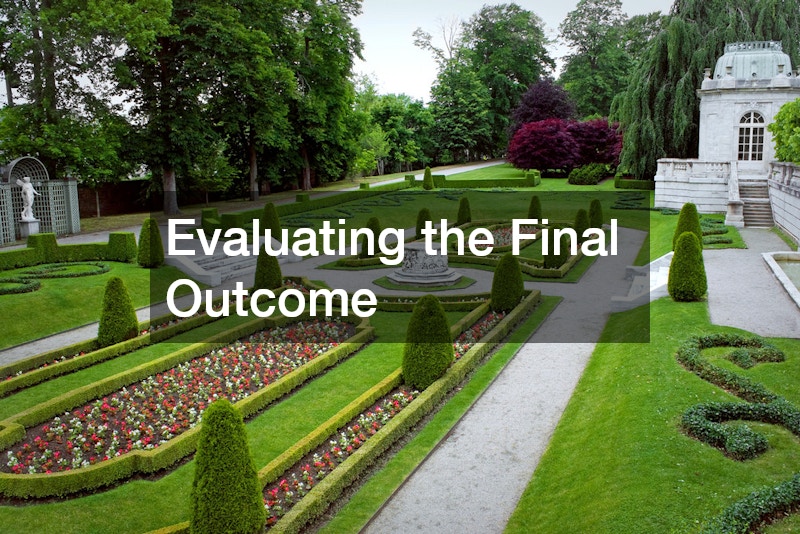Transforming your outdoor space into a beautiful, functional environment can seem overwhelming without the right guidance. This is where a landscape designer comes in. A skilled landscape designer combines creativity, technical knowledge, and an understanding of plants, materials, and site conditions to help you realize your vision. Whether you want to enhance curb appeal, create a peaceful garden retreat, or add practical features like fences or gates, working with a landscape designer can make the process smoother and more enjoyable.
This guide will walk you through everything you need to know about collaborating with a landscape designer—from what they do and how to choose the right one, to budgeting, common challenges, and maintenance tips. Along the way, you’ll also learn how other related services like fence companies, gate installation, bark mulch landscaping services, and local tree services play a role in the bigger picture. By the end, you’ll be well-equipped to embark on your landscape project with confidence, ensuring your outdoor space becomes a place you love.
What Does a Landscape Designer Do?

Understanding Their Role
A landscape designer’s primary role is to plan and design outdoor spaces that blend beauty and function. They assess your property’s unique characteristics, such as soil type, sun exposure, drainage, and existing vegetation. Based on these factors, they create plans that include plant selections, hardscaping elements like patios or paths, and features like lighting and irrigation systems.
The Difference Between a Designer and an Architect
While the terms landscape designer and landscape architect are sometimes used interchangeably, they differ in scope and training. Landscape architects usually have formal degrees and licenses, often working on large-scale or public projects. Landscape designers typically focus on residential or smaller commercial spaces, emphasizing creative design and horticultural knowledge without necessarily requiring licensing.
Skills and Expertise Required
A proficient landscape designer must balance artistic vision with practical skills. They should understand plant biology, soil science, construction techniques, and local regulations. Experience with landscape lighting install, gate installation, and coordinating with fence companies or local tree services is also valuable for seamless project execution.
How to Choose the Right Landscape Designer
Evaluating Experience and Style
Look for a landscape designer whose portfolio aligns with your aesthetic preferences. Do they specialize in modern, formal, or naturalistic designs? Check if they have experience using residential landscaping material that fits your desired style, like natural stone pavers or eco-friendly mulch options.
Checking Credentials and Certifications
While not always required, certifications from recognized industry bodies can indicate a designer’s commitment to professionalism. These might include affiliations with landscape designer associations or horticultural societies. Ask whether they work closely with licensed arborists or local tree services for projects involving significant tree trimming or removal.
Reading Reviews and Testimonials
Client reviews provide insight into the designer’s reliability, communication, and problem-solving skills. Did the designer effectively coordinate with fencing contractors or manage complex gate installation projects? Positive testimonials often highlight smooth collaboration and high-quality results.
What to Expect During the Initial Consultation
Preparing for the Meeting
Before meeting your landscape designer, gather inspiration images, photos of your yard, and notes about what you want to achieve. Consider practical needs like irrigation installation or space for lawn tractor storage if you own one.
Discussing Your Vision and Needs
Be honest about your priorities, whether it’s creating flower boxes, adding a privacy fence, or installing landscape lighting. This ensures the designer understands your lifestyle and preferences.
Establishing Budget and Timeline
Discuss your budget upfront. Landscape designers can tailor solutions based on what you’re willing to invest. Include costs related to services from fence companies, gate installation, and bark mulch landscaping services if relevant. Clarify the project timeline to align expectations.
Understanding the Design Process

Conceptual Plans and Renderings
After the consultation, the landscape designer will present conceptual sketches or digital renderings. These visuals help you envision layout, plant placement, and hardscaping elements like walkways or retaining walls.
Choosing Materials and Plants
Selecting the right residential landscaping material is crucial. Your designer will recommend materials compatible with your climate and style preferences. Expect discussions about the type of bark mulch landscaping services you might want or the best species for flower boxes.
Revisions and Final Approval
Designs often go through a few revisions to address your feedback. This collaborative process ensures the final plan balances beauty, function, and budget constraints.
Budgeting for a Landscape Design Project
Estimating Costs
Costs vary widely based on the complexity of your project and materials chosen. Expect to budget not only for design fees but also for installation expenses, including tree trimming, landscape lighting install, or gate installation by specialists.
Managing Unexpected Expenses
Unforeseen challenges like soil issues or the need for additional tree work may arise. Establish a contingency fund with your designer and landscaping contractors to handle these smoothly.
Financing Options
Many landscape designers offer payment plans or can connect you with financing options. Consider spreading out payments, especially if your project includes costly elements like a mower package or a lawn tractor for sale to maintain the new landscape.
Common Challenges and How to Overcome Them
Addressing Site Limitations
Every property has unique constraints—slopes, poor drainage, or limited sunlight—that can impact your design. A skilled landscape designer will suggest appropriate solutions, such as raised flower boxes or using specific residential landscaping material to improve soil stability.
Dealing With Weather and Climate
Local climate greatly influences plant selection and maintenance needs. Designers factor this in, recommending drought-resistant plants or coordinating irrigation installation to conserve water.
Navigating Permits and Regulations
Some projects, especially those involving fences, gates, or large trees, may require permits. Your landscape designer will guide you through these legalities and liaise with fence companies or local tree services to ensure compliance.
Collaboration and Communication Tips

Establishing Clear Communication Channels
Effective communication with your landscape designer is essential to the success of your project. Agree early on about preferred methods—whether that’s email, phone calls, or regular in-person meetings—and the frequency of updates. Some designers provide weekly progress reports or use project management tools that keep everyone on the same page. Setting these expectations upfront prevents misunderstandings and ensures timely decisions. Clear channels also make it easier to address questions or concerns as they arise, keeping the project moving smoothly.
Providing Constructive Feedback
When offering feedback, it’s important to be specific and objective. Instead of vague comments like “I don’t like this,” try to explain exactly what feels off and suggest possible alternatives. For example, if a plant choice doesn’t appeal to you, describe whether it’s the color, size, or maintenance level that’s a concern. This clarity helps your landscape designer make targeted adjustments efficiently without guesswork. Remember, constructive feedback builds a collaborative environment where creativity thrives, and your vision becomes reality.
Resolving Conflicts Efficiently
Disagreements are a natural part of any creative project, but they don’t have to derail progress. Approach conflicts with an open mind and a focus on solutions rather than assigning blame. Remember that your landscape designer brings valuable expertise to the table and can propose compromises that balance your preferences with practical considerations. When possible, try to listen actively and communicate your priorities clearly. Resolving conflicts quickly and respectfully maintains a positive working relationship and helps keep the project on track.
Sustainable and Eco-Friendly Design Practices
Incorporating Native Plants
Using native plants is a cornerstone of sustainable landscape design because these species are naturally adapted to your region’s climate, soil, and ecosystem. They typically require less water, fertilizers, and pesticides, reducing both cost and environmental impact. A skilled landscape designer will help you select native species that blend seamlessly with your existing vegetation, and complement other features like flower boxes or bark mulch landscaping services. Native plants also support local wildlife such as bees and birds, enriching your outdoor space with natural biodiversity.
Water-Conserving Strategies
Water efficiency is vital when designing an eco-friendly landscape. Strategies such as drip irrigation systems, rainwater harvesting, and smart irrigation installation significantly reduce water waste while ensuring plants receive the right amount of moisture. Your landscape designer may collaborate with local tree services to monitor and maintain tree health, making sure water is delivered effectively without runoff. Implementing these methods helps conserve a precious resource and lowers your utility bills, all while keeping your landscape lush and healthy.
Eco-Friendly Material Choices
Selecting sustainable residential landscaping material can greatly influence the environmental footprint of your project. Opt for materials that are recycled, reclaimed, or locally sourced to minimize transportation emissions and resource depletion. Biodegradable mulches and organic soil amendments improve soil health without harmful chemicals. Landscape designers often recommend eco-friendly alternatives for patios, pathways, and flower boxes that not only look great but also support long-term environmental well-being. These choices contribute to a garden that’s as kind to the planet as it is beautiful.
Understanding Maintenance Requirements
Seasonal Care Guidelines
Regular maintenance is crucial to preserving the beauty and function of your landscape over time. Seasonal tasks typically include pruning trees and shrubs, refreshing bark mulch landscaping services to maintain moisture and soil health, and inspecting irrigation systems for leaks or inefficiencies. Your landscape designer can provide a customized care calendar tailored to your local climate, plant species, and design elements. Staying on top of seasonal care ensures your landscape thrives year-round and helps prevent costly repairs down the line.
Identifying and Solving Common Issues
Pests, soil erosion, and plant diseases are some common issues that may arise in any landscape. Early identification and treatment are essential to prevent these problems from escalating. Landscape designers often work closely with local tree services who specialize in tree trimming and health assessments to maintain your yard’s structural integrity. They can also recommend trusted landscaping contractors to handle necessary repairs or remediation. By addressing problems proactively, you preserve the health and longevity of your outdoor space.
Working With Maintenance Teams
If you hire landscaping contractors for ongoing upkeep, it’s important to maintain clear communication so your landscape designer’s vision is preserved throughout the care process. Regular updates from maintenance crews about plant health, irrigation performance, or any new issues help ensure timely interventions. Your landscape designer may remain involved to oversee maintenance work and advise on updates, such as replacing flower boxes or upgrading landscape lighting install components. This collaborative approach keeps your landscape looking its best and functioning efficiently.
Evaluating the Final Outcome

Ensuring Quality and Satisfaction
At project completion, conduct a thorough walkthrough with your landscape designer to ensure everything meets your expectations. Verify that fences and gates have been installed correctly, plantings are healthy and properly placed, and landscape lighting install is fully operational. This review allows for any last-minute tweaks or fixes, guaranteeing that your vision is fully realized. Taking this time ensures you’re satisfied with both the aesthetics and the functionality of your new outdoor space.
Gathering Feedback
Providing honest feedback after the project is beneficial not only for your designer but also for future clients. Sharing your experience with fence companies, gate installation teams, or bark mulch landscaping services involved in your project helps others make informed decisions. Constructive feedback encourages continuous improvement and strengthens professional relationships. Don’t hesitate to highlight what you appreciated as well as areas for growth.
Sustaining Long-Term Beauty and Functionality
Landscape design success is an ongoing process that extends well beyond installation. Staying engaged with your landscape designer or maintenance team for seasonal refreshes and to tackle emerging challenges ensures your outdoor space remains beautiful and functional over time. Well-maintained landscapes not only increase your property’s curb appeal but also create lasting enjoyment for you and your family. Regular care and thoughtful updates sustain the health and charm of your investment for years to come.
Conclusion
Working with a landscape designer can transform your outdoor space into a stunning, functional retreat that reflects your style and meets your needs. From the initial consultation through design, budgeting, and maintenance, a knowledgeable designer guides you every step of the way. Their expertise ensures integration of important elements like fences, gates, bark mulch landscaping services, and landscape lighting install, while also helping navigate challenges such as permits and site limitations.
A successful collaboration requires clear communication, realistic expectations, and openness to feedback. Sustainable practices and proper maintenance extend the life and beauty of your landscape investment. Whether you’re adding flower boxes, coordinating with local tree services for trimming, or purchasing a mower package to keep your yard pristine, the right landscape designer can make all the difference.
Ultimately, your outdoor environment will become a space you love—a perfect balance of aesthetics, comfort, and practicality. With this guide, you’re well-equipped to choose the right landscape designer and achieve backyard success that lasts.
